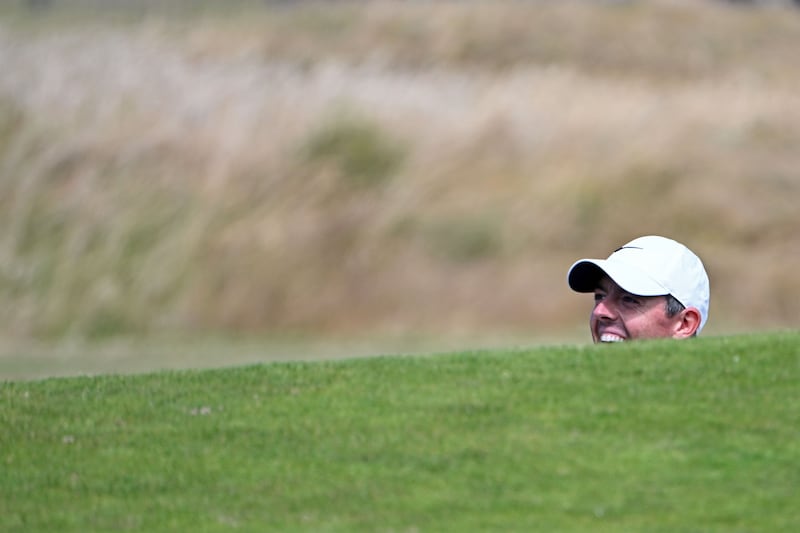There is no logic to it. The fact of the matter is that if a golf course designer proposed a severe dogleg of a hole, where the tee shot was required to wing its way over the annex of a building, and then the approach played to a wide narrow green fronted by a deep bunker and with a roadway over the back, that architect would be told to rip up the blueprint.
And yet such a hole is one of the most iconic in all of golf: The Road Hole, the 17th on the Old Course at St Andrews, is a par 4 of 451 yards that traditionally has played as the toughest on the Open rota of courses, with its par differential of +.79 in 1984, making it the hardest hole ever.
Its victims are many, none more so than the unfortunate Japanese player Tommy Nakajima who stood on the 17th tee of the third round of the 1978 Open in a tie for the lead. His approach found the front of the green but, thereafter, one disastrous shot followed another: his putt caught the wrong slope and fell into the deep Road Hole bunker, from where he took four shots to escape and his dreams of lifting the Claret Jug disappeared.
Rather cruelly his endeavours were to provide a moniker for the bunker that survive in caddie lexicon to this day, known as it is as the “Sands of Nakajima.”
READ MORE
On the last occasion that the championship was staged over the Old Course in 2015 the scores on the boards told their own sorry tale of woe for many protagonists. Through the four rounds, there were just nine birdies and a total of 217 bogeys or worse. The average score was 4.65. And one of its victims back then was Shane Lowry.
“Look, 17 is just a brute, isn’t it?” said Lowry, who ran up an eight to derail his ambitions that year where he went from contention to missing the cut in a heartbeat. “It’s all about manning up and hitting the tee-shot,” he added, not wanting any reminding that he went right and out-of-bounds on that occasion.
Pádraig Harrington for one is convinced that the sand levels in the bunkers have been lowered to accentuate the challenge to players. On that front the Road Hole bunker is the most penal.
The hole is one that challenges from the off, with the tee shot required to be put over the hotel annex – with players picking a letter from the hotel signage, most usually the “O” in Old – in taking a direct route to the promised land of the fairway. There is an out-of-bounds wall down the right where the Old Course Hotel dominates, then the green features a false front and is backed by the Old Station Road and the deep bunker to the left.

“The tee shot is very intimidating because you know there is room on the right but you can’t see it standing on the tee. And then the green is a tiny target . . . you have the bunker left and it gets very short on the right, it’s tricky. It’s one of the most dangerous holes out there. You play it slightly more defensively than you’re going to play the rest of the course,” observed Séamus Power.
Jon Rahm was fed a story by Lee Trevino the other day, who informed him the course was originally meant to be played clockwise.
“And that almost made sense, because that way the green would be uphill, the bunker will be on the right. It’s almost easier to access because it’s definitely a really tricky entrance to the green, from the fairway we play at and then the green from there it’s all downhill,” remarked Rahm, who described the 17th as a “proper championship hole” coming down the stretch, adding: “Obviously under pressure any hole can be hard, but 17 is a proper test for somebody that has a one-shot lead. It’s just difficult . . . very hard, very, very hard.”















